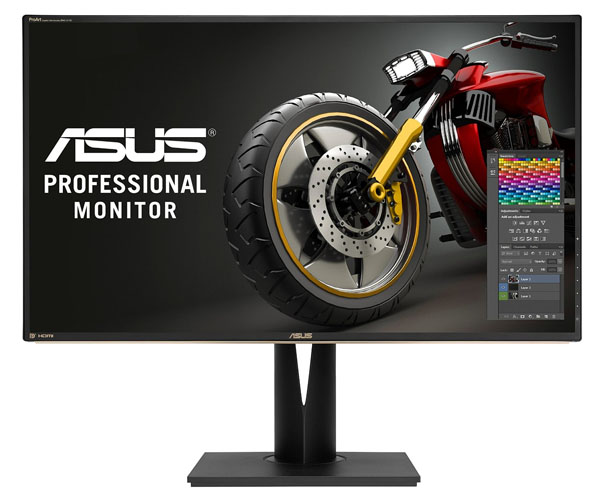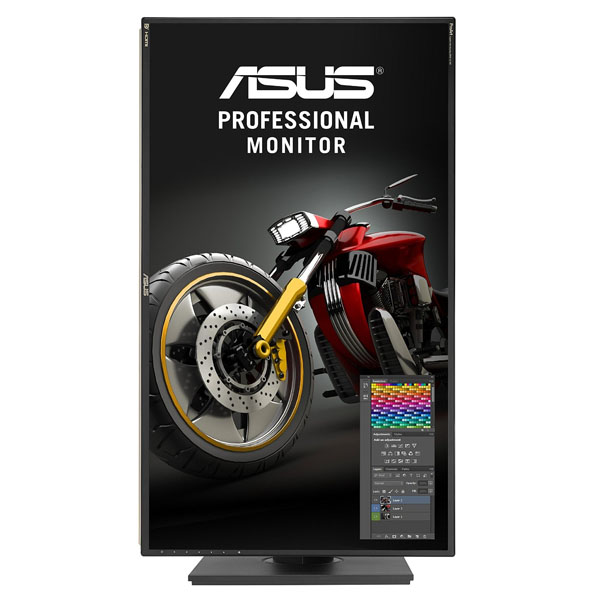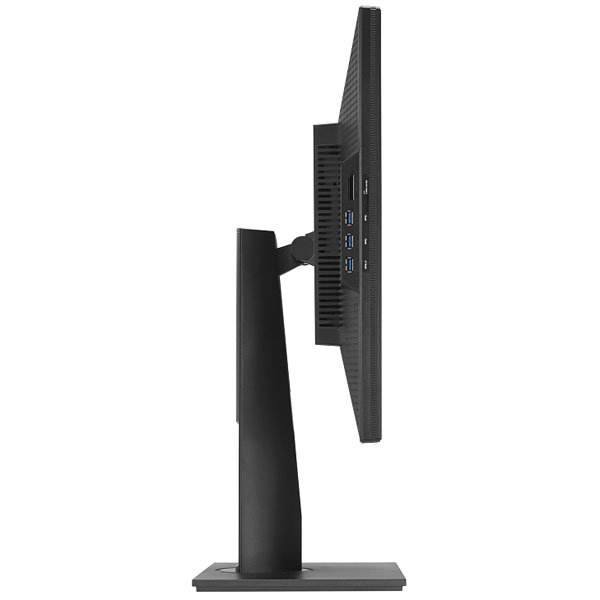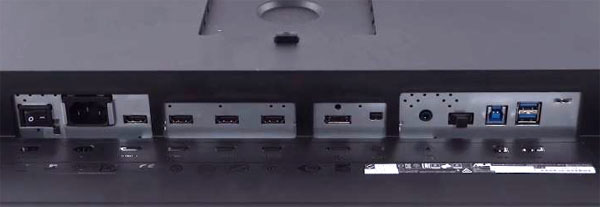Early Verdict
Our overall impressions of the PA329Q are certainly favorable and we would recommend it to users looking for a cheaper alternative to monitors at the top of the price range. It can be used reliably in its fixed sRGB and Adobe RGB modes and Asus adds value by including easy-to-use calibration software. We’d like to see more of the OSD’s features available in more picture modes and more extensive color meter support. Other than those complaints, this is a solidly-built and reliable professional’s tool.
Pros
- +
Ultra HD
- +
Bright IPS panel
- +
Image clarity
- +
Accurate gamut and gamma
- +
Includes calibration software
- +
Build quality
- +
Styling
- +
Value
Cons
- -
Out-of-box grayscale accuracy
- -
Inflexible OSD calibration
- -
Software doesn’t support high-end instruments
Why you can trust Tom's Hardware
Introduction
With the advent of technologies like G-Sync, FreeSync and fast refresh rates, gamers have plenty of reasons to upgrade to a new monitor. However, progress in the professional category has hit something of a plateau. After all, where do you go once perfectly accurate color is achieved? We’ve reviewed plenty of displays that can’t get any better when it comes to rendering precise color gamuts, white points and gamma curves.
The only two things left then are panel technology and resolution. IPS has pretty much become the de facto standard in every monitor category thanks to its superior viewing angles and more consistent color and uniformity over old-school TN. That tech still has a place in value-oriented products but as more choices become available, the price gap shrinks accordingly.
It is logical then that those shopping for a new pro screen will put Ultra HD atop their list of must-haves. We’ve seen a couple of 5K monitors from Dell and HP but the resolution sweet spot seems to be shifting from QHD to UHD thanks to many new product introductions.
Asus’ ProArt series provides several compelling choices for users needing factory-calibrated color and a rugged workaday tool that can get the job done reliably. Last December we looked at the PA328Q, which offers everything needed for color-critical applications except a wide-gamut option. Today we’re looking at the PA329Q, which adds Adobe RGB to the mix along with a bright 32-inch IPS panel and Ultra HD resolution.
Specifications
MORE: Best Gaming Monitors
MORE: Best Professional Monitors
MORE: How We Test Monitors
Get Tom's Hardware's best news and in-depth reviews, straight to your inbox.
MORE: How To Choose A Monitor
MORE: All Monitor Content
A quick check online reveals that the PA328Q is selling for just under $1,000 while the PA329Q comes in around $300 higher. That extra cash buys you an Adobe RGB gamut option and an internal lookup table that reaches a 14-bit depth rather than 12. Native panel bandwidth is still 10 bits. Of course you’ll need a 10-bit-capable video board to take full advantage of this feature. When editing the latest content however, you’ll have the ability to master for High Dynamic Range (HDR) and larger color gamuts like Rec.2020.
Our initial measurements reveal the PA329Q’s native gamut to be larger than Adobe RGB, particularly in the red primary. While we couldn’t create a full Rec.2020 spec through calibration, that extra red will get you closer than many other professional displays. DCI-P3 is also supported and since that gamut falls within the monitor’s native parameters, you can create a custom preset using Asus ProArt Calibration software which is included in the package.
Also in the box is a factory calibration data sheet for sRGB and Adobe RGB modes. These are fixed in the picture menu and provide an easy way for users to simply plug and play their desired color spec without further adjustment. Another notable feature is the four HDMI 2.0 inputs. Though this version has been standardized for nearly two years, it’s only just starting to appear in computer monitors. The extra bandwidth allows it to accept 3840x2160 signals at 60Hz.
With the addition of a great-looking Ultra HD IPS panel, the latest model in the ProArt line shows a lot of promise when compared to more expensive products like NEC’s PA322UHD and the 5K panels from Dell and HP. Can the PA329Q measure up to the competition? Let’s take a look.
Packaging, Physical Layout, And Accessories
The PA329Q’s carton is quite substantial and is well-qualified to protect its fragile and expensive contents. The base and upright are already assembled and need only to be snapped onto the panel to complete the package. Accessories include an IEC cord for the internal power supply plus USB 3.0, DisplayPort and HDMI cables. You also get an Asus-branded cable tie to keep things tidy behind the monitor. The factory calibration sheet is individual to each sample and shows data for both sRGB and Adobe RGB color gamuts along with gamma, grayscale and uniformity test results. A CD contains the user manual plus drivers and a calibration app.
Product 360





Asus has upped the style quotient with a super-thin metal bezel that measures only 10mm. The bottom is accented with a gold trim strip and that finish is extended to the logo featured prominently around back. Controls are via push-buttons that are on the reverse side of the bottom right corner. Their positions are marked by small icons. Don’t worry if you can’t read them, large indicators appear on the screen when you press any key.
The anti-glare layer is fitted tightly to maximize clarity and results in a crisp image with no grain or softness. Reflections are virtually non-existent even in brightly-lit rooms and the screen has plenty of output to cope with sunny conditions.
The base and stand are solidly-built and feature a 5.25-inch height adjustment plus the pictured portrait mode. You also get 25 degrees rearward tilt, five degrees forward. and 60 degrees swivel in each direction. The hardware easily befits a monitor in this price category.
The panel is a bit thicker than most at nearly 2.75 inches. Its flat back makes wall mounting easy, however. In the side-view photo you can see three USB 3.0 ports plus a handy SD card reader. That slot also accepts MultiMediaCard and Memory Stick with an adapter.
The PA329Q’s backside is an example of ventilation overkill but we aren’t complaining. The internal parts are heavily shielded and through the upward-facing grill you can see two decent-sized speakers. They are driven by 3W amps so their volume is a little higher than most. The drivers present a reasonable frequency range given their small size, and distortion is minimal. To expose the 100mm VESA mount, simply unsnap the upright.
Asus has included four HDMI 2.0 inputs, which is a first in our experience. You also get two DisplayPorts (v1.2), one of which is the mini variety. Two more USB 3.0 downstream and a single upstream port plus a headphone jack round out the connection options.

Christian Eberle is a Contributing Editor for Tom's Hardware US. He's a veteran reviewer of A/V equipment, specializing in monitors. Christian began his obsession with tech when he built his first PC in 1991, a 286 running DOS 3.0 at a blazing 12MHz. In 2006, he undertook training from the Imaging Science Foundation in video calibration and testing and thus started a passion for precise imaging that persists to this day. He is also a professional musician with a degree from the New England Conservatory as a classical bassoonist which he used to good effect as a performer with the West Point Army Band from 1987 to 2013. He enjoys watching movies and listening to high-end audio in his custom-built home theater and can be seen riding trails near his home on a race-ready ICE VTX recumbent trike. Christian enjoys the endless summer in Florida where he lives with his wife and Chihuahua and plays with orchestras around the state.
-
IQ11110002 Now release a ROG Swift version 32inch 4k 120hz IPS G Sync.Reply
And make the LED ring and LED ROG logo RGB so people can match the rest of their system!
Their concept 27 inch 4k is too small(I own the 28inch Samsung UD590) and the ideal 40 inch is too big for most desk pc's, 32 is the sweet spot in my opinion and I would buy it. -
KenZen2B I could not find any mention of HDR for this product or did you forget to include that information ?Reply
For any future reviews for UHD monitors, please include information on HDR, WCG, and if the DP can be upgraded to 1.3.
Thanks for the info. -
nikoli707 Reply18507723 said:I could not find any mention of HDR for this product or did you forget to include that information ?
For any future reviews for UHD monitors, please include information on HDR, WCG, and if the DP can be upgraded to 1.3.
Thanks for the info.
clearly says rec2020 which is the standard hdr will get up to in the future. -
bit_user Reply
I haven't read the actual text of ITU-T Rec BT.2020, but I believe the HDR formats are optional. Is that not so?18507891 said:
clearly says rec2020 which is the standard hdr will get up to in the future.18507723 said:I could not find any mention of HDR for this product or did you forget to include that information ?
For any future reviews for UHD monitors, please include information on HDR, WCG, and if the DP can be upgraded to 1.3.
Personally, I don't even care about HDR, in a non-OLED display. The mere fact that you get 10-bit and an expanded color gamut is enough, for a display like this.
-
ngaio Did Asus send a hand-picked monitor for review? Or did Tom's purchase it retail? The uniformity results are very competitive indeed! My expectation with a mid-range 4K panel in 2016 is that panel uniformity will be uneven, given the reports of folks who have purchased this model from Asus and comparable other brands.Reply -
Light Illusion Without the ability to user true 3D LUT calibration such 'professional' displays really are not professional.Reply
Not being able to control gamut is the issue - for true volumetric colour accuracy you need 3D LUT based calibration.
As for UHD, that is really just resolution.
WCG is the colour gamut (Rec2020 for example)
And HDR is high dynamic range (high peak white values).
However, the UHDTV Alliance is attempting to link all three, via its 'Ultra HD Premium' specification.
(There is info on UHDTV, some of the issues, etc, as well as more about 3D LUT calibration here - please note this is our commercial website, but we have a lot of information there that is available for all to review: http://www.lightillusion.com/uhdtv.html) -
TeamColeINC What do I have to do for them to make 40" models? I know there are the Korean 40" UHD monitors, but they all have issues and about a 25% chance of getting a lemon....Reply -
ZippyPeanut A PROFESSIONAL monitor with a 16:9 aspect ratio?! This disqualifies it from consideration even if it were a third of its current price. 16:9 kills it as a professional monitor.Reply -
Ben Archer The Color Gamut And Luminance charts are nearly unreadable due to size and JPEG compression artifacts. The carousel is really unkind to these charts.Reply
